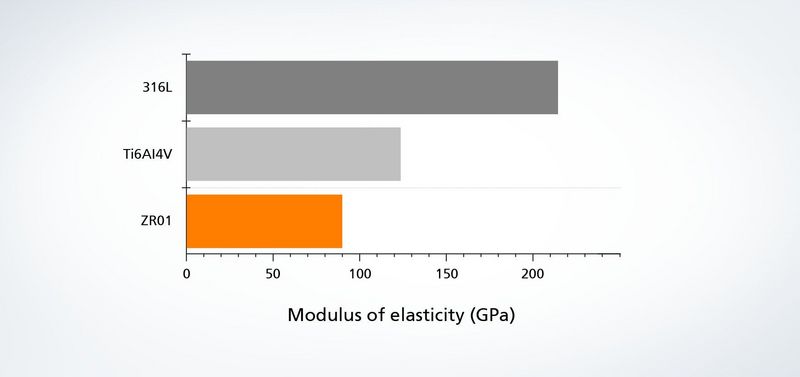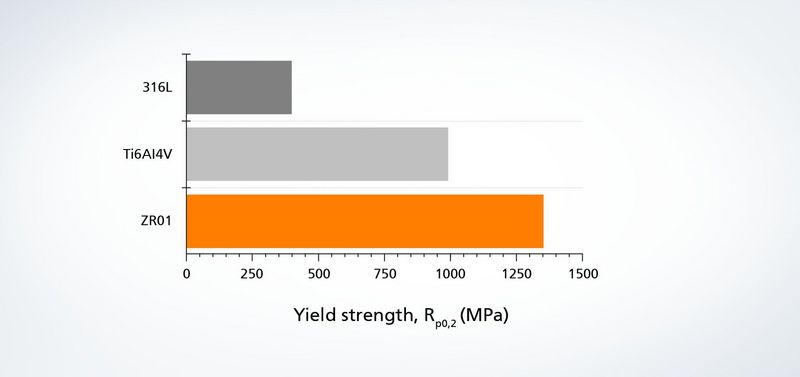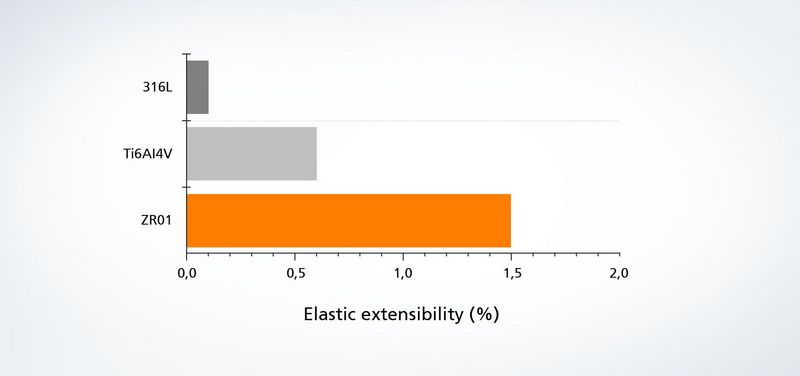Amorphous metals are also called metallic glasses and are quite unusual all-round talents. For even though extremely strong, they are also highly elastic at the same time. Two actually opposing characteristics, the unique nature of metallic glasses makes this possible. Compared to crystalline materials, amorphous metals do not have an ordered lattice structure. This is created by the melt's high cooling rate. This prevents an even distribution of the atoms. The result: an amorphous, in other words, non-crystalline solid body where the atoms remain in an almost disordered state.
What are amorphous metals?
What are the benefits of metallic glasses?
A high level of hardness and strength with concurrent extreme elasticity: this unique combination yields countless benefits in the production of amorphous components.
Amorphous components have the same material properties in all directions. This offers many advantages, for example, in additive manufacturing. The build volume can be utilised in the best possible way in combination with the component's orientation.
3D-printed amorphous components are biocompatible, making them predestined for many medical technical applications. Amorphous implants can be customised to fit the patient's body shape.
Amorphous metals have a high yield strength combined with an elastic elongation of almost 2%. This provides many benefits in the production of implants, sensors or flexure joints as absorption is significantly improved.
Thanks to the high level of strength, it is possible to make amorphous metallic components thinner, saving more material, and making them lighter. This is particularly important in the robotics or medical technology sectors, as well as in aerospace and e-mobility.
Amorphous metals have low temperature ductility, which means that they are excellent for use in applications with extremely low temperatures and they retain their properties. This makes this material class perfect for the aerospace sector.
Amorphous metals have a very high level of hardness and therefore little abrasion, comparable with ceramic. This property is particularly important for heavily stressed components in tool and mould making as well as for lifestyle products such as high-quality watches.
Amorphous metals – 3 questions about the new super material
Amorphous metal alloys – a look at four characteristics
Heraeus AMLOY has developed ground-breaking alloys which are exceptionally suitable for the production of innovative implants, among other things. Zirconium-based alloys such as Amloy-ZR01 and Amloy-ZR02 are available even now. The latter is already a certified material in terms of biocompatibility in accordance with ISO 10993-5 and ISO 10993-12. Furthermore, titanium is considered a material for medical components such as bone implants or pacemakers. The current research into titanium alloys for applications in medical technology is very promising. Whether titanium or zirconium – amorphous alloys impress with different properties and are therefore particularly suitable for specific applications.
White paper

From a lifestyle watch to medical technology to lightweight design: amorphous metals open up new application options for a multitude of sectors and industries. One of the main great advantages is the combination of 3D printing and metallic glasses. Find out all about it!




